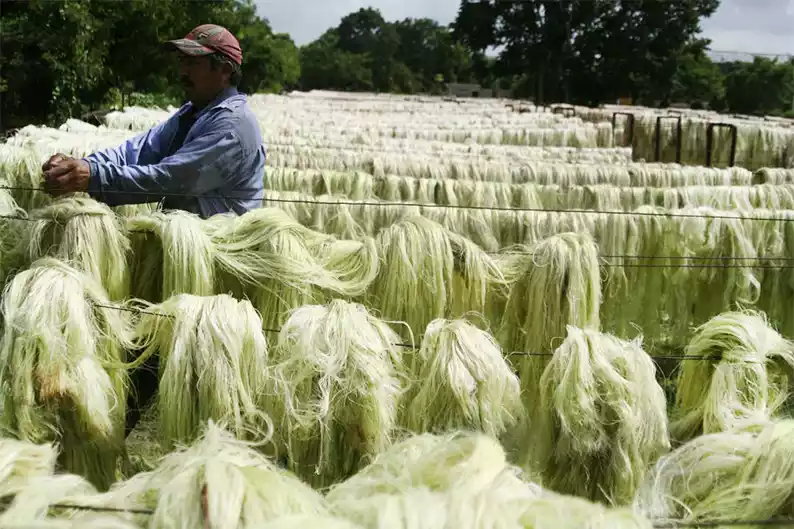Henequen, the Mexican green gold

Henequen, the Mexican green gold, is responsible for generating thousands of jobs and millions of dollars in revenue in Mexico.
Henequen, also known as Agave fourcroydes, and Chelem, Agave angustifolia, are the only two plants of the Agave genus native to the state of Yucatan.
Since pre-Hispanic times, they were utilized by the Mayans to obtain highly resistant fibers for making ropes and cords. In this regard, the Mayans referred to it as “Ki.”
This Mexican green gold is known as sisal because large quantities of henequen fiber were shipped from the port of the same name on the Yucatan Peninsula to North American and European markets.
According to Mayan legend, the god Zamná, a wise priest and deity of medicine and agriculture, was walking through a henequen plantation and got injured by the thorns of one of its leaves.
Immediately, he noticed that these leaves produced very resilient fibers, which would be of great use to his people.
To this day, the plant is cultivated in Yucatan and Tamaulipas.

The Mexican green gold in numbers
According to the Agricultural and Fisheries Information Service (SIAP), in 2017, the national production of henequen exceeded 12,000 tons, harvested from an area of 6,461 hectares.
Similarly, its consumption remains primarily industrial, for the manufacturing of ropes, cords, sacks, and threads. It is also used to craft items such as bags, rugs, shoes, carpets, and hammocks.
Around five thousand individuals, small-scale producers, engage in the creation of bags, shoes, jewelry, wallets, decorations, and handicrafts with henequen fiber in about 40 cooperatives and five workshops, preserving techniques passed down through generations.
Furthermore, the uses of the Mexican green gold have expanded to include the production of alcoholic beverages, ethanol, biogas, livestock feed, and biodetergent, among many other things.
It is known that Charles Lassus, of French origin, was the first to initiate the extraction of henequen liquor in the past century.
To obtain a liter of henequen liquor, also known as sisal, a little over 4 kilograms of pineapple is required.
Despite all the efforts, the Mexican green gold sector has been affected by the importation of fiber and threads from Brazil and Africa.
Also read: A startup drives sustainable fashion in Peru






